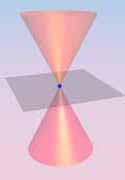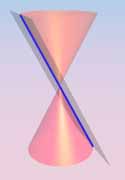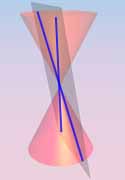sections of a right circular cone. For completeness,
we include the degenerate cases.
Definitions
Given a point V, a line L through V, and αε(0,π/2),
the cone with vertex V, axis L and angle α consists of
all points on lines through V making angle α with L.
The lines are called the generators of the cone.
As an example, take the origin O as vertex,
the z-axis as axis,
and α = π/4. This defines
the cone K0 with equation
x2+y2=z2.
Sections of K0 by planes z = k (k ≠ 0) are circles.
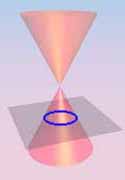
are the usual plane conics.
Note. It is far from clear that these are conics
as described
by the usual focus-directrix definition.
The theorem of Dandelin shows this directly.
Here, we will show that the sections of a cone
have equations quadratic in x and y. Since we
know that such curves are plane conics, this is
enough.
The equations of conic sections
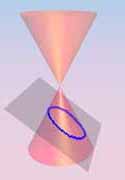
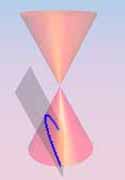
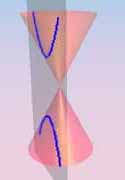
give degenerate plane conics.
Observe that each is either finite (a single point!),
or contains a line (a generator of K0).
On the other hand, it is easy to see that no
non-degenerate conic contains a line.
